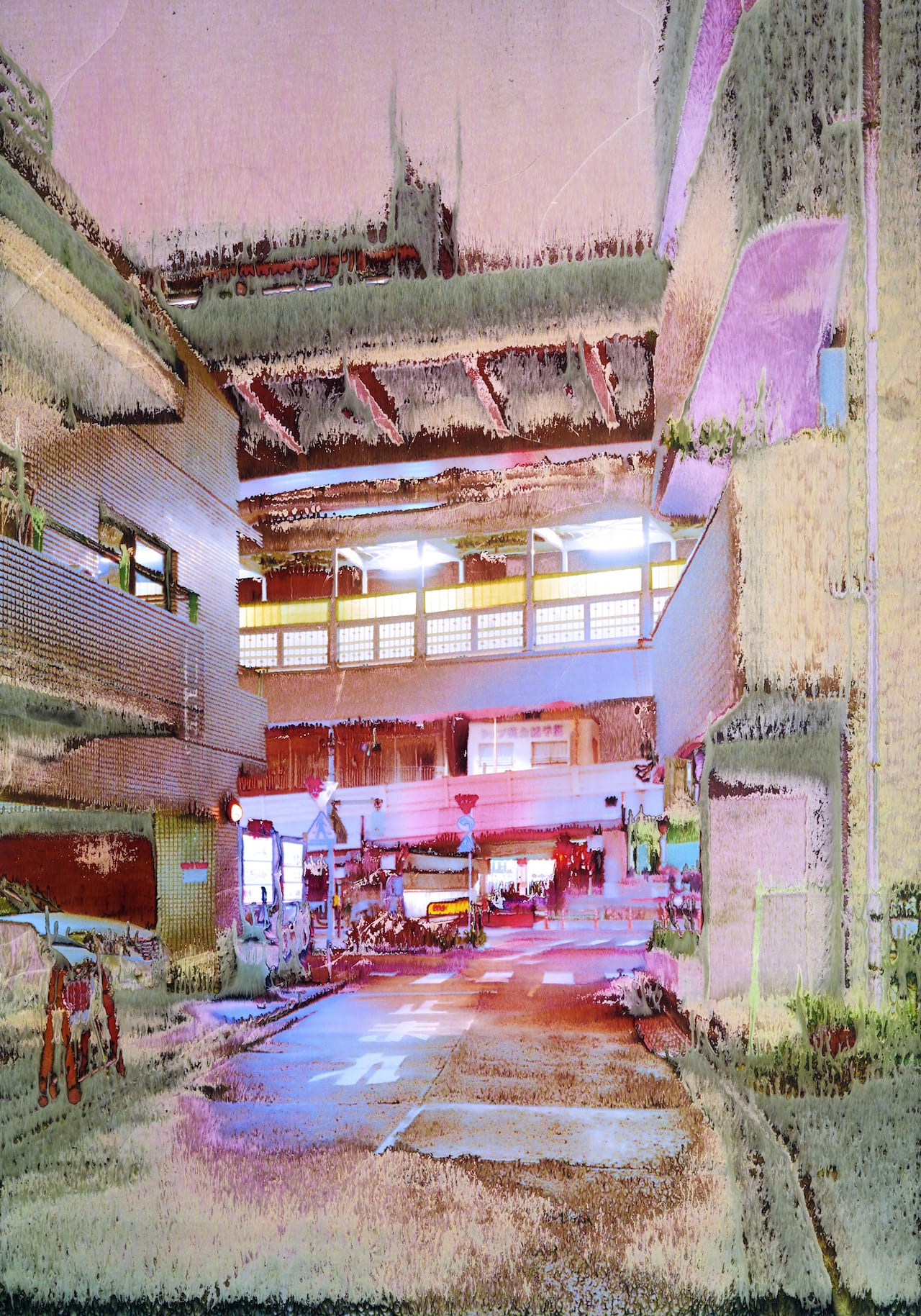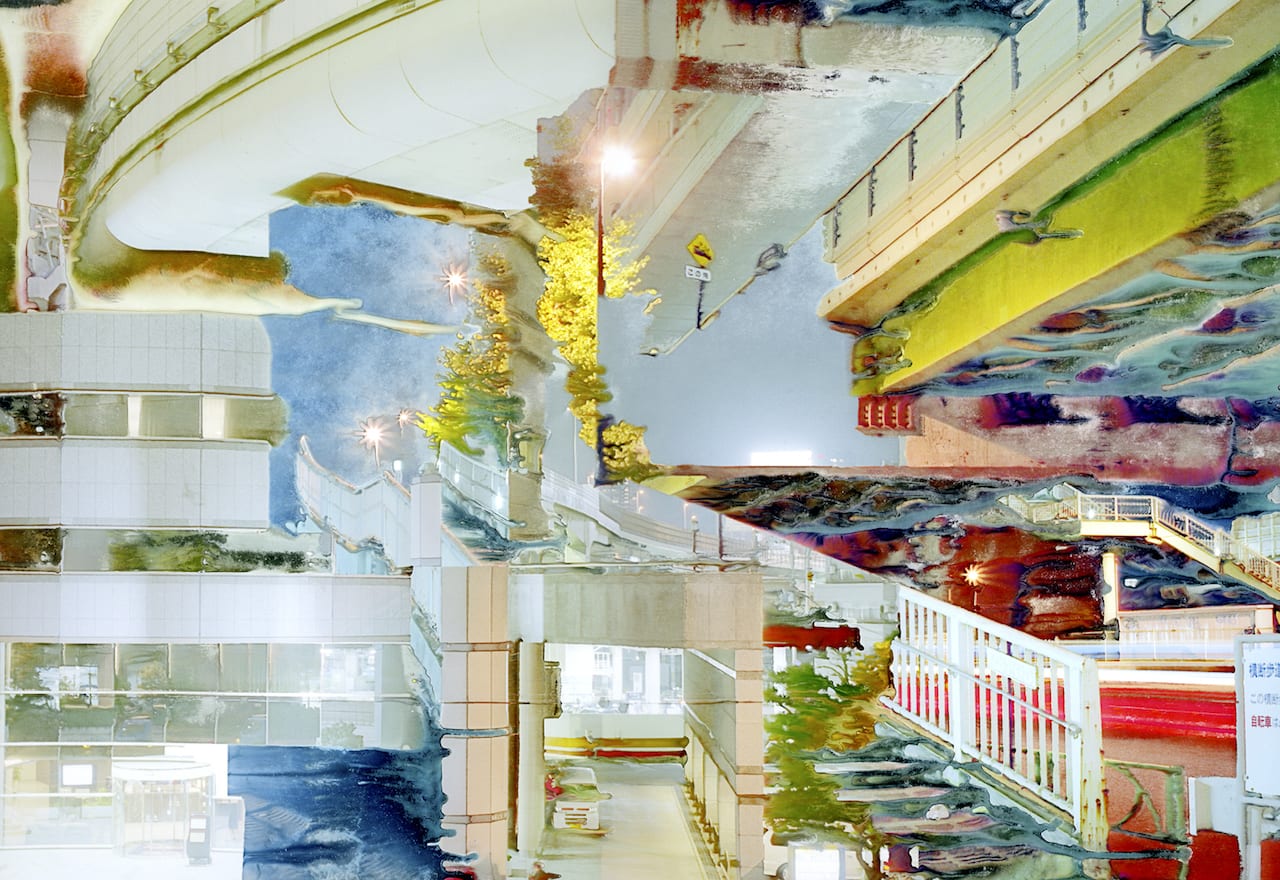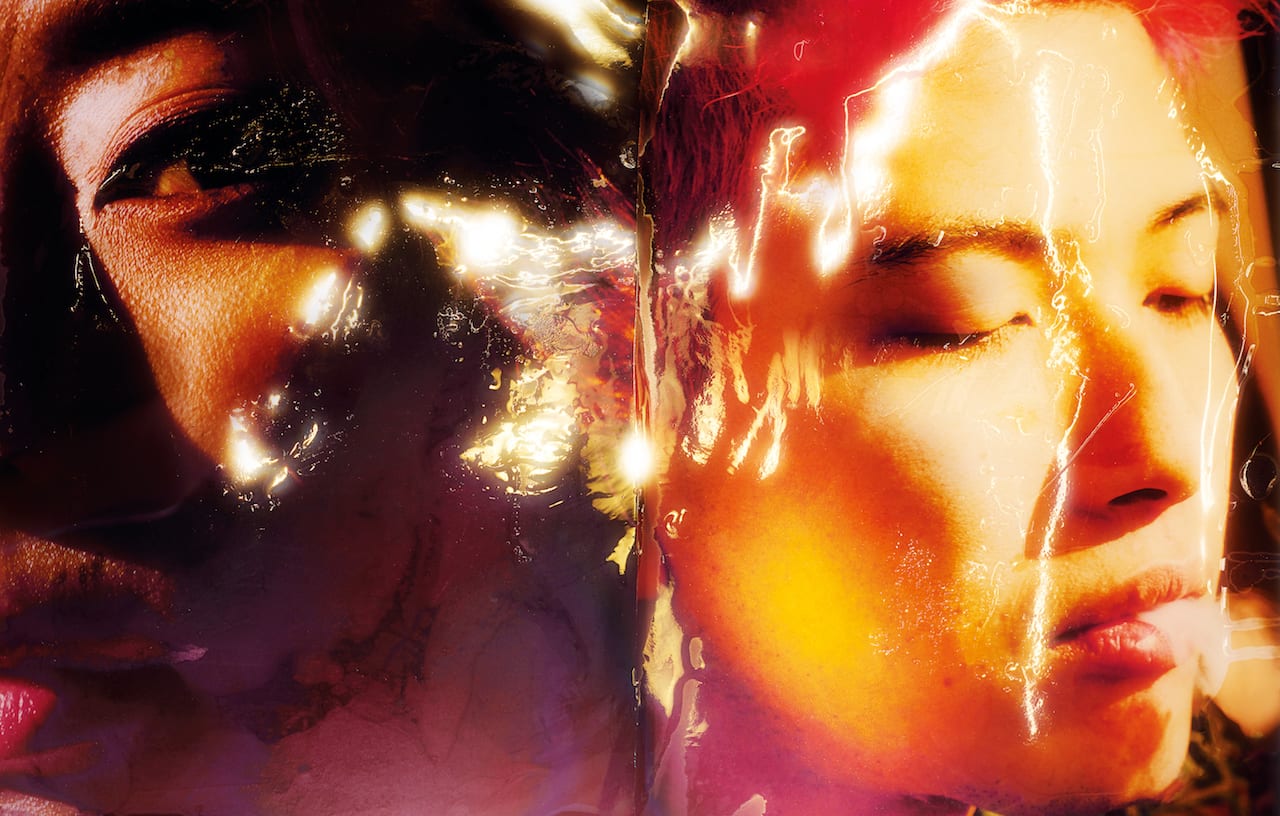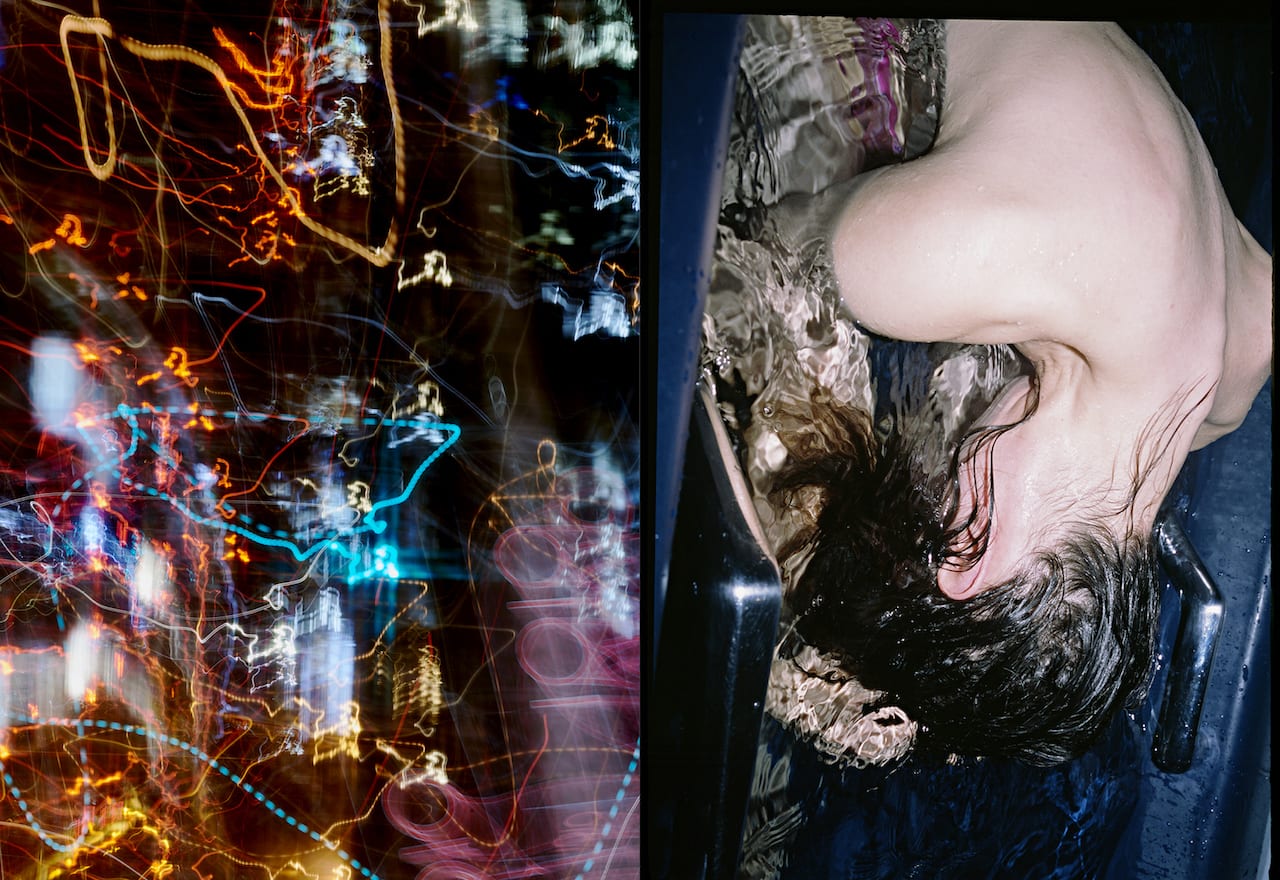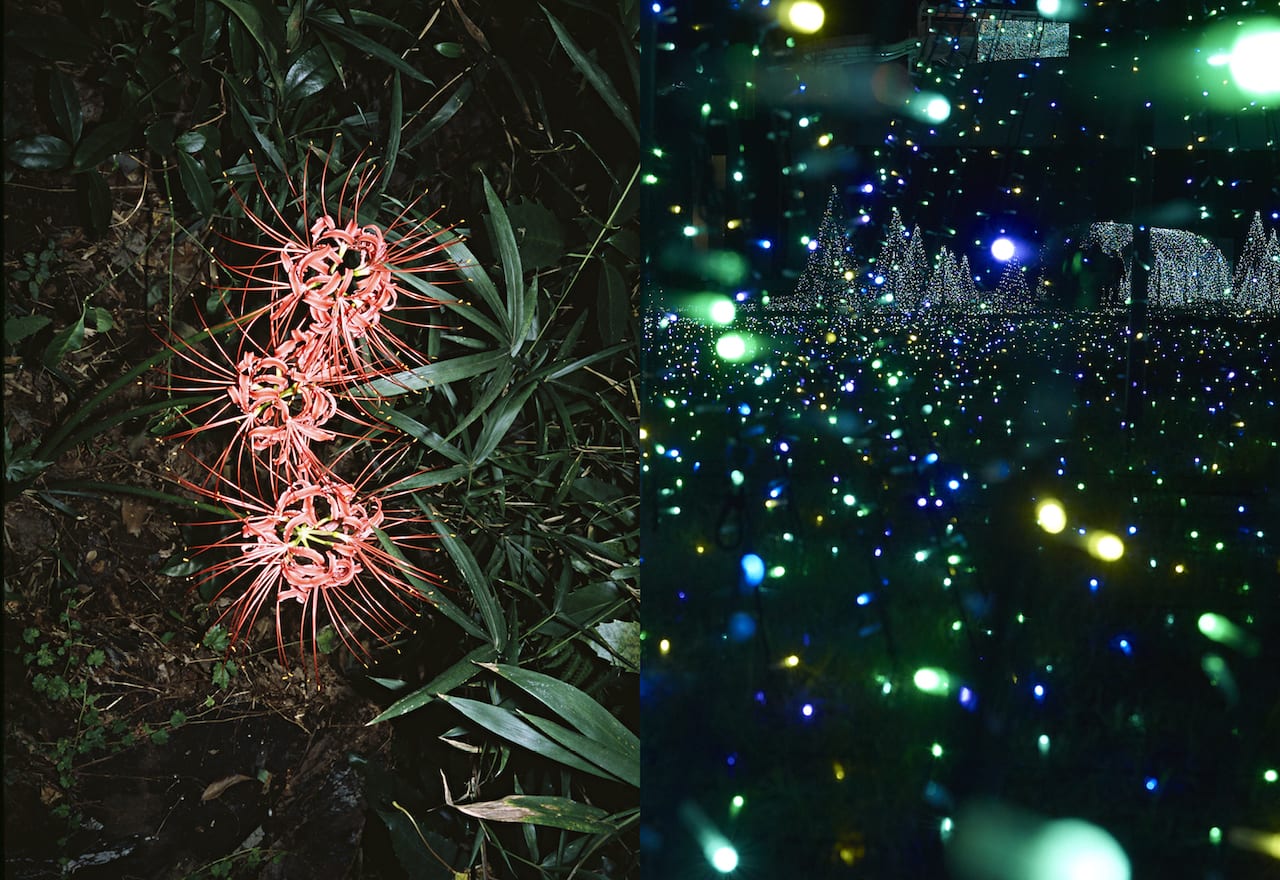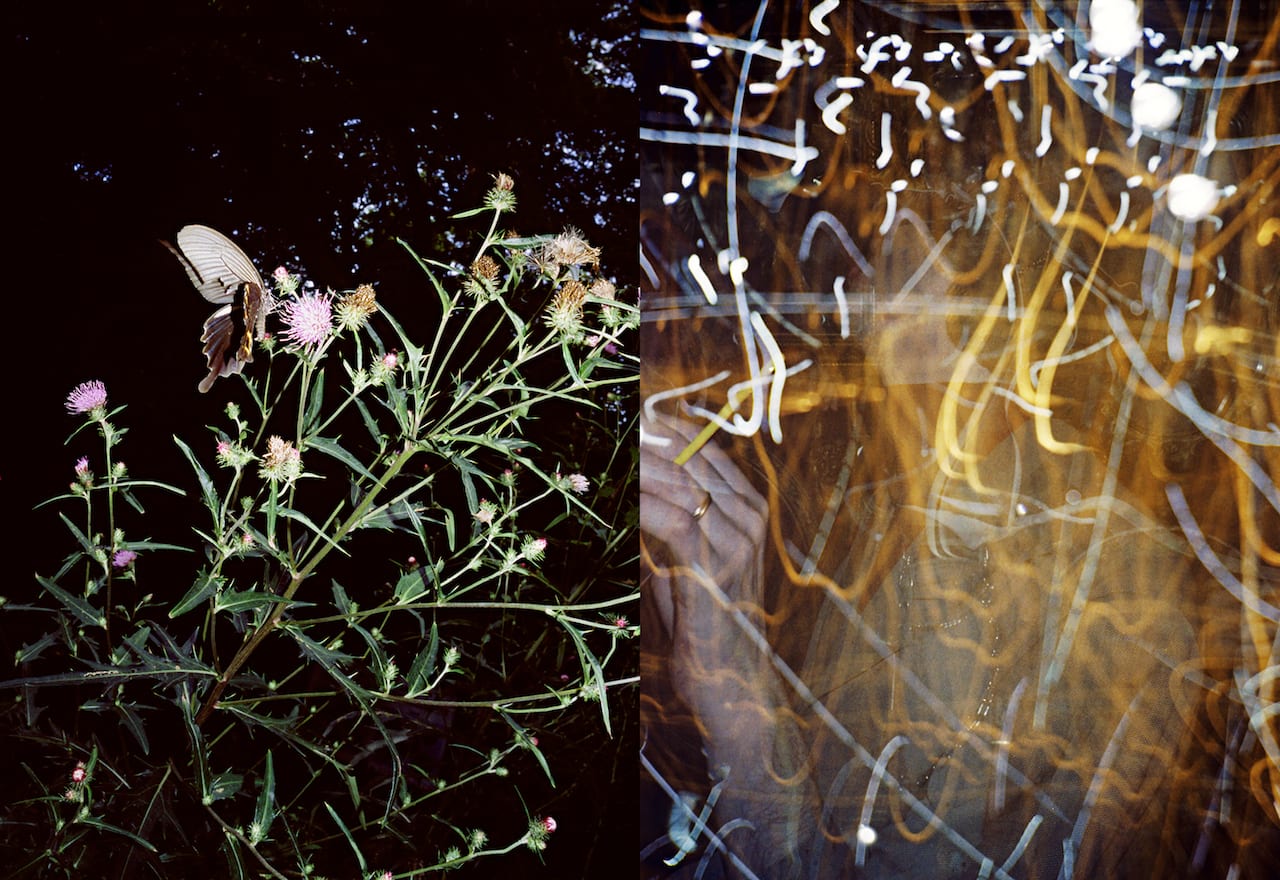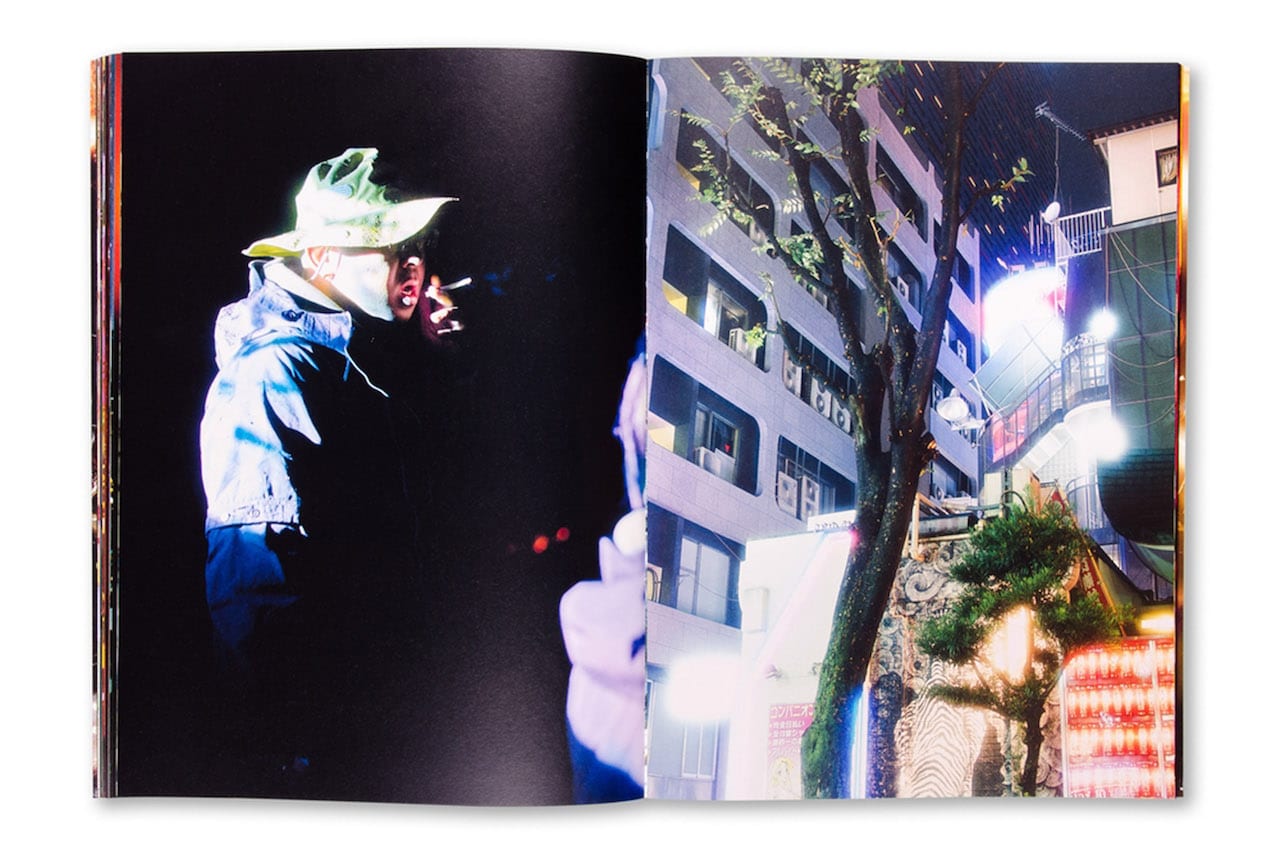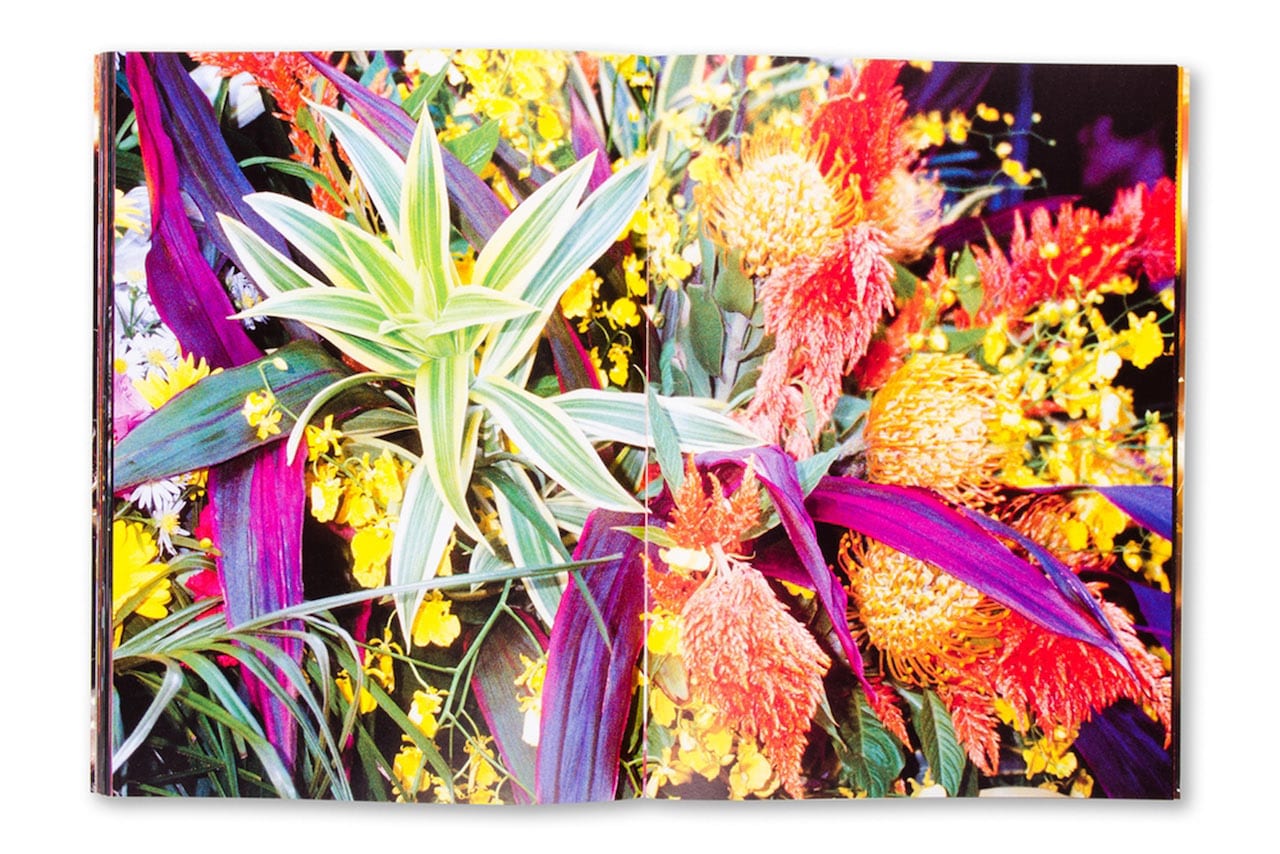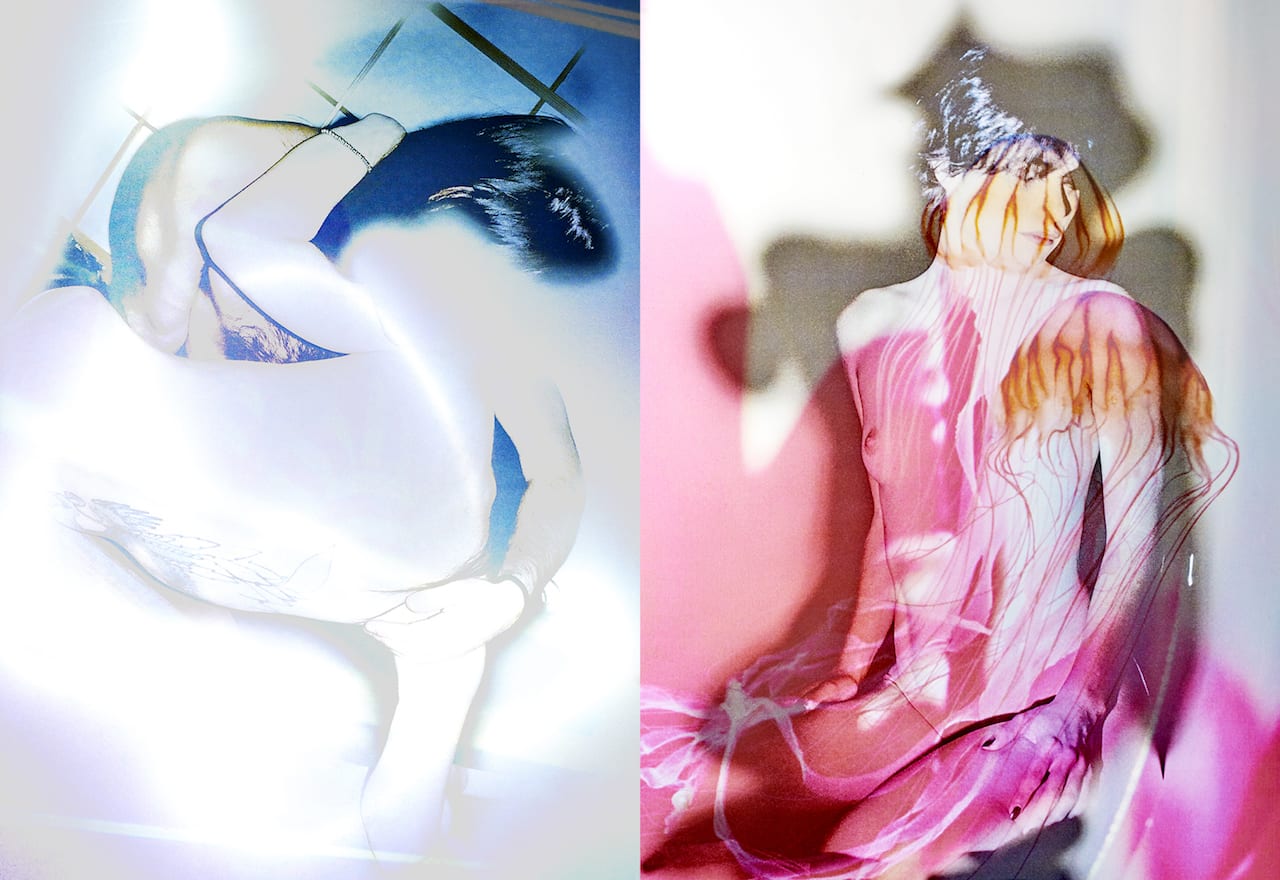“I love how the city is in perpetual metamorphosis. It’s always moving and glowing,” says Jean-Vincent Simonet, who visited Tokyo, Japan for the first time in 2016, and quickly decided he would shoot at night. “Giving a liquid feeling to the photographs made sense to me. It reinforced the psychedelic experience of being in the city”.
People in Japan describe Tokyo as a “living entity” – not just because of the earthquakes and typhoons that regularly stir the capital, but because it is a city in constant flux. At all hours of the day and night, streams of people and cars rush down its huge neon streets, which sprawl out like tributaries into pedestrianised roads, stacked 10 stories high with shops, restaurants and karaoke bars. Vibrant city centres seem to emerge right off the back of darker inner-city suburban streets, which are all connected by colossal highways, and an elaborate train network that dwarfs most other capital cities’.
“There is something about the lighting in the city at night that is quite psychedelic,” says the 27 year-old image-maker, who was featured as one of BJP’s Ones to Watch in 2016. “It’s like you’re in a boat, always rocking and moving”. Simonet returned from his first trip to Japan in 2016 with blurred and distorted photographs of people at night, but also sharper, more detailed images of the city that he shot on a tripod, using a medium format camera.
For Simonet, it was important to photograph the city, because he wanted the project to be experiential, to “chronicle [his] own intimate journey in Japan”. But when he started to sequence the images he found that the portraits and landscapes didn’t gel, so he began to experiment.
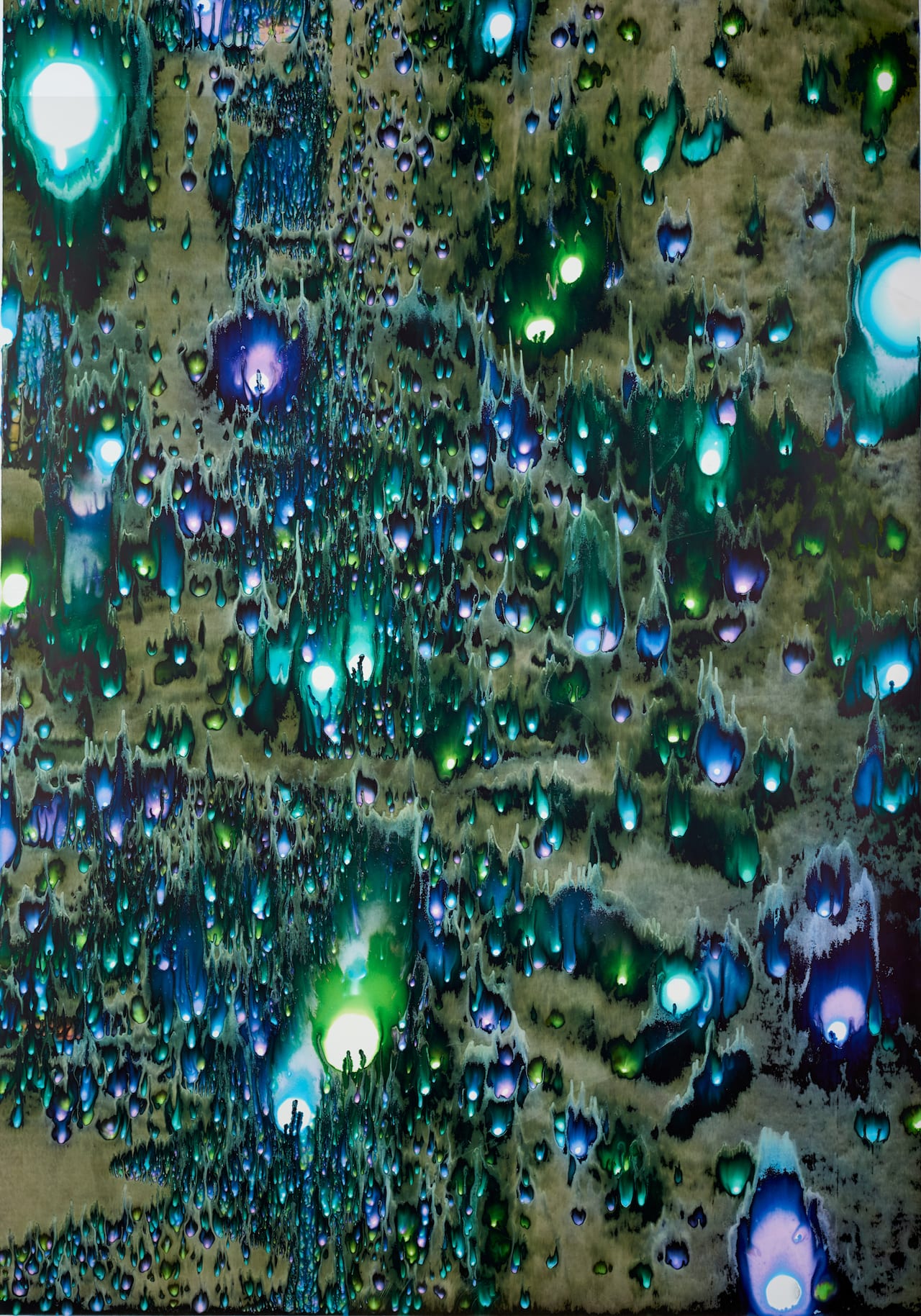
Simonet cites Daisuke Yokota as one of his main influences, particularly in the way he uses unorthodox methods to destroy physical photographs. “He uses it in a sensitive, dark, and poetic way,’ Simonet explains, “the idea of using photography as a primary but not finished material is something I try to push in my own work”.
His process is entirely physical. Firstly, he prints the photographs onto plastic paper so that the ink never quite dries. Then, after leaving them for up to a week depending on the desired effect, he immerses the paper into a mixture of water and chemicals that dissolves and enhances certain colours.
“It’s exciting for me that it’s different every time. Each time I can improve the technique, which makes me want to do it more. If you work enough, at some point the right results will come”. At the opening of his exhibition on Thursday at the Webber Gallery in London, Simonet will be demonstrating this unique process on smaller images, and offering them to purchase as one-off prints.
The technique comes from being able to dedicate lots of time to experiment and make mistakes, which Simonet can only do by juggling these personal projects with commissioned photography and editorials. At first he tended to follow the client’s briefs, but since his work has become more recognised, he has gained more freedom. “I always try to add something special in the shooting or in post production,” he says, “but when you shoot for a magazine and they want it a week after, it’s hard to go deep into the experiments. You need time to make mistakes, to think about the technique”.
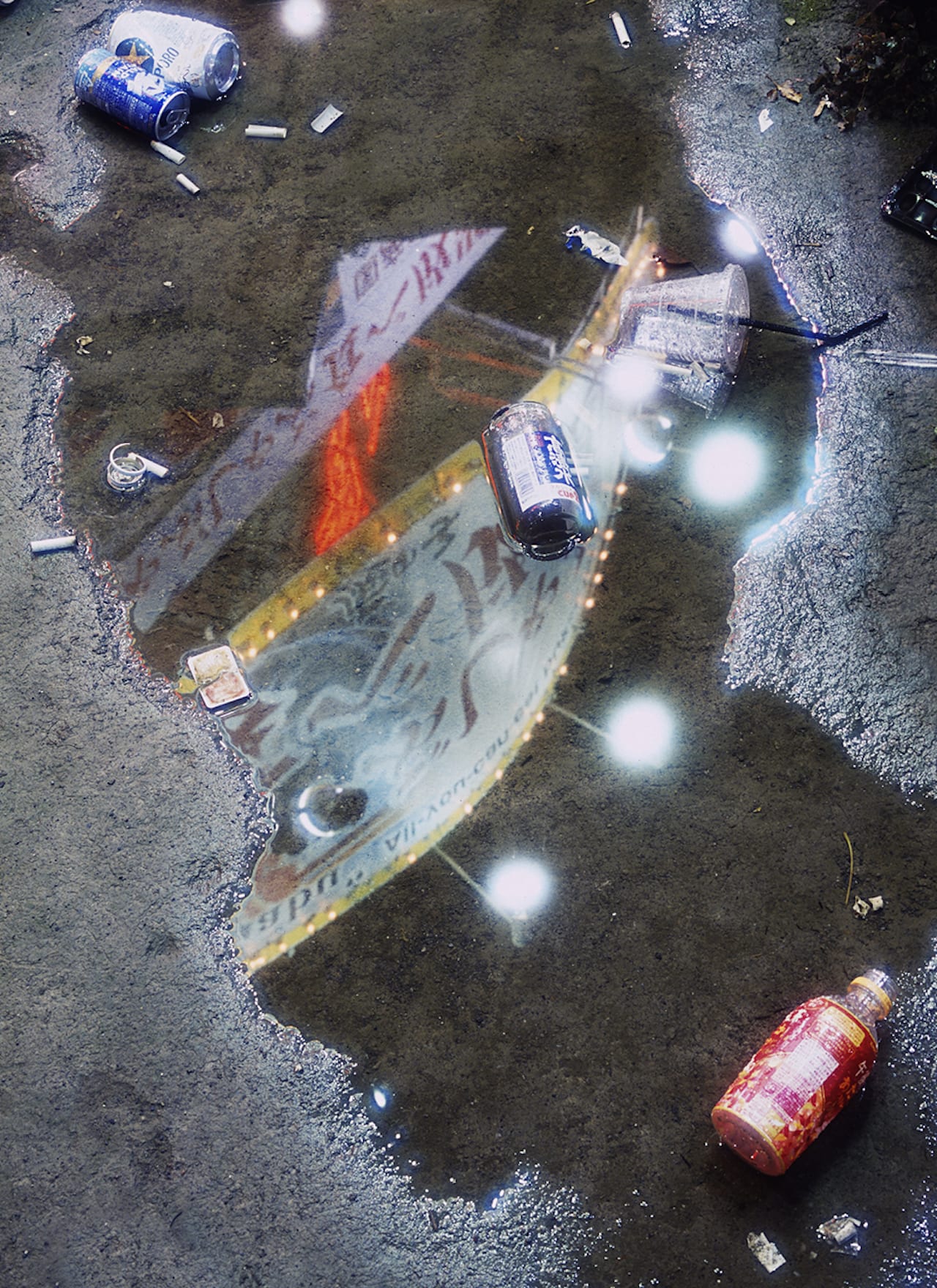
After discovering this method of printing, Simonet returned to Japan in 2017 with a clearer idea of what he wanted to photograph. The title for the project, In Bloom, emerged out of this idea of Tokyo as a growing, blooming city, but it also references the striking floral arrangements that Simonet found and photographed around the country. In Japan, when a new shop or business is launched, they will be sent huge bouquets by friends and clients to be displayed at their premises.
Japan is also a culture where nature is respected at a godly status, and the arrival of cherry blossoms are a source of great national pride, all of these points were lurking in the back of Simonet’s mind when thinking of a title. But, funnily enough, the words themselves came from a Nirvana song, and were realised during a rendition of their 1991 track In Bloom, on a night out in a karaoke booth.
The images were published as a book in September, and this will be the first time the photographs are exhibited in an exhibition. Simonet is pleased to be able to show his process at the opening too, because the dissolving colours in liquid are just as visually interesting as the final image. He hopes to make a video out of it later this year.
In Bloom will be on show at the Webber Gallery in London from 06-21 December www.webberrepresents.com/about-gallery. The book is published by Self Publish Be Happy, and is available to purchase for £35 https://shop.selfpublishbehappy.com/product/in-bloom-by-jean-vincent-simonet
